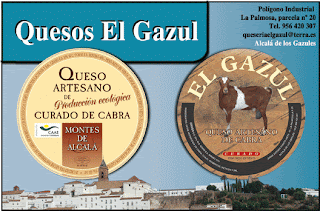Spanish original
Alcalá, located halfway between Gibraltar and Jerez, was a strategic point on the contraband route. Its geographical situation ensured it was fully implicated in the smuggling phenomenon, although the mountainous area around Ronda was the best route to escape the watchful eye of the Guardia Civil. La Línea became the gateway from the Rock of Gibraltar, through which passed the contraband goods that seduced the Andalucians. Products like tobacco, cigarettes, coffee, saccharine, cheese, butter, canned meat, condensed milk, alcoholic liquors … And other things like linen, wool, the first electrical goods, expresso coffee machines, petrol and tinder lighters, fountain pens, the first ballpoint pens, English bicycles, cameras, typewriters, and thousands more objects which pre-empted the consumer society.
Smuggling was nothing new. It was a very common activity in Alcalá and the whole of Cádiz Province. From the early 19th century, It had become for many families the only way of making a living. It occurred because of the high prices resulting from heavy import taxes imposed by the State. Gibraltar, moreover, was the channel through which British goods could enter through the back door. Thousands of workers on bicycles, and matuteras1 on foot, went from La Línea into Gibraltar every morning. In the evening they came back loaded with smuggled goods. The British officials took no notice because this was good business for them, and the Spanish ones could be bribed to look the other way.
The smugglers were very well organised. Some used expert pack-dogs, which swam out of Gibraltar with packages strapped to them, to be deposited in hidden places along the coast of the Bay of Algeciras. There the smugglers waited with strings of trained mules, the goods were loaded into large baskets and they disappeared into the Sierra Carbonera so as not to be spotted by the Guardia Civil. The mules could spot their tricorn hats and uniforms from a mile off, because sometimes the Guardia Civil killed them on the run. The booty was formidable; one mule laden with contraband was worth a fortune.
All this smuggling eventually caused such a drain on the economy that in April 1891 the tobacco importing company was obliged to erect a metal fence one metre high the whole width of the neutral ground ((where Gibraltar airport is today) from the East wall to the West. Two weeks later a Decree determined the Fiscal Zone of La Línea, and a month after that, the General Order for the whole of the Campo de Gibraltar. But the smugglers would not be defeated. Half of Spain carried on smoking packaged tobacco, and the Gibraltarians took advantage of the situation by supplying poor-quality cut tobacco.
The smugglers had to devise new routes and strategies, and they would fish lorries to transport the packages of tobacco to Seville and Madrid. One of those lorries tipped over on the Los Barrios road, leading to the discovery of an impressive cargo of packaged tobacco and cartons of English cigarettes. It was a major scandal, but after a few days everything was back to normal. It was said that Father Lara went to Gibraltar every month and came back laden with contraband hidden under his cassock. But it was also said that he gave a lot of handouts to the poor.
For the children, the contraband route through La Línea, Puerto Gális, Alcalá and Jerez was full of adventure and romance. It could be said that many of them would have been happy to become smugglers themselves, because Alcalá was always smuggling country.
JUAN LEIVA
Translated by Claire Lloyd
NOTES
1. Matuteras were small-scale smugglers, usually women – often widows or spinsters who had no other means of support. They were highly regarded by the population they served, because of the risks they took and because they brought in supplies of scarce goods like coffee, tobacco and penicillin.
Crónicas del ambiente alcalaíno (XXVII)
Hace 3 días













